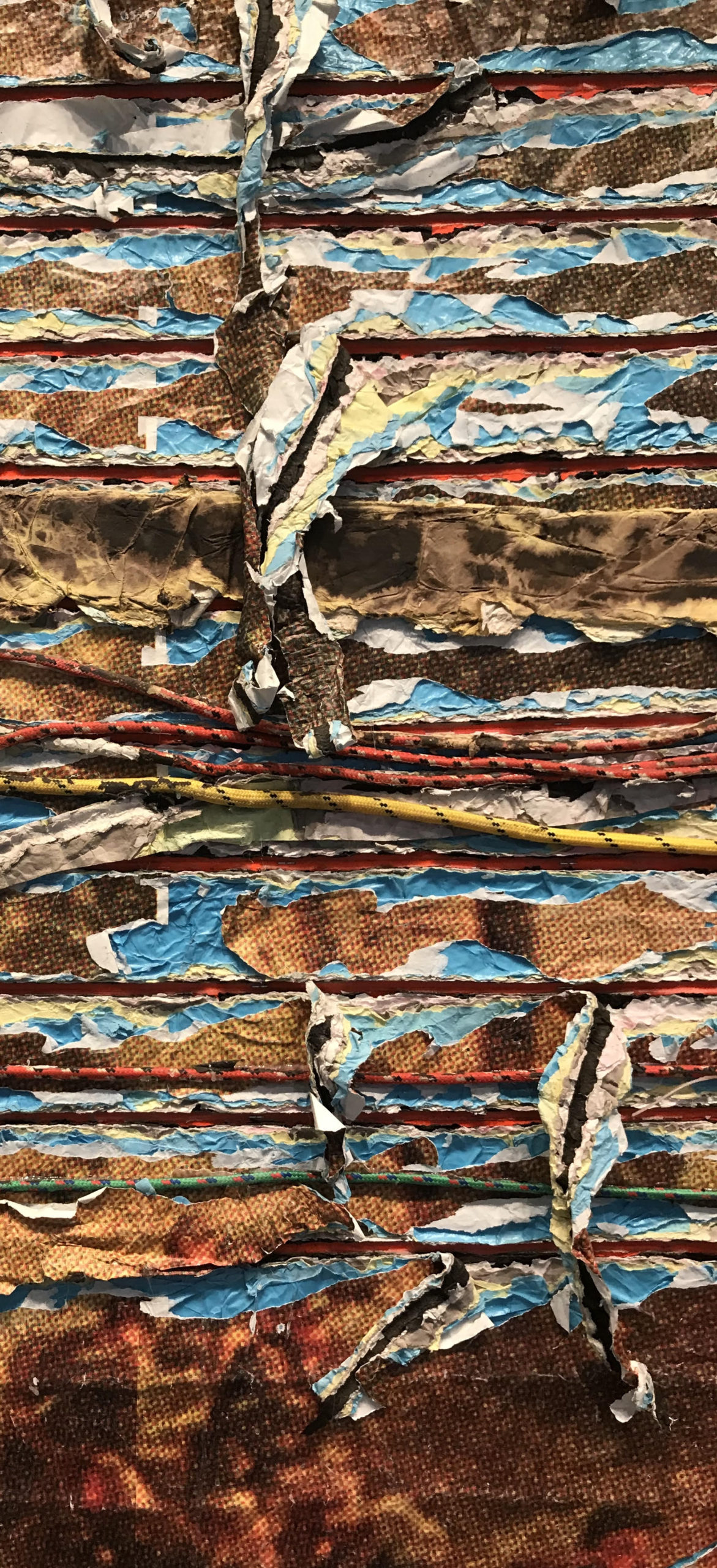
The image here shows a detail of an enormous painting entitled Pickett’s Charge by LA artist Mark Bradford. The floor-to-ceiling work wraps around the cylindrically shaped Hirshhorn Museum. It envelops the entire inner ring of the second floor. This impressive, ominous work is a site-specific installation that was inspired by a large panoramic painting completed in 1883 by French artist Paul Dominique Phillppoteaux. That historic cyclorama (a 360-degree diorama) depicts Pickett’s Charge, which occurred on the last day of the Battle of Gettysburg in 1861. Phillppoteaux’s work shows the event from a Union soldier’s vantage point and is on permanent display at the Gettysburg Visitor Center in Pennsylvania.
At the time, Phillppoteaux’s work was so mesmerizing, immersive and life-like that it reportedly moved veterans of the battle to tears.
For Bradford, an African American artist from South Central Los Angeles, and countless others, this seemingly distant Civil War battle and related political and social struggle remain relevant today. Bradford’s version takes reproductions of that historic work and corrupts them in a variety of ways — through layering, scratching, tearing, shredding and weaving. This beautiful, captivating, yet violent work prompts one to consider how history is written, recorded and challenged over time. Who records the historical narratives? From what perspectives are these narratives told? Who is left out of these narratives? Who keeps and protects these narratives for future generations? How do we reconstitute these narratives so they are relevant today?
